Ransomware in 2024: A Year of Escalation and Evolution
In 2024, ransomware didn’t just knock on the digital doors of businesses—it kicked them down with unprecedented force. December alone set a grim milestone, recording the highest-ever number of ransomware victims in a single month. As a renowned editor with over 20 years of expertise in cybersecurity and ransomware threats, I’ve watched this menace evolve from a petty annoyance into a sophisticated, multi-faceted juggernaut that shook industries, crippled critical services, and left millions vulnerable. The stakes have never been higher, and the lessons from ransomware in 2024 are stark: ransomware is no longer just a technical challenge—it’s a relentless adversary demanding our full attention.
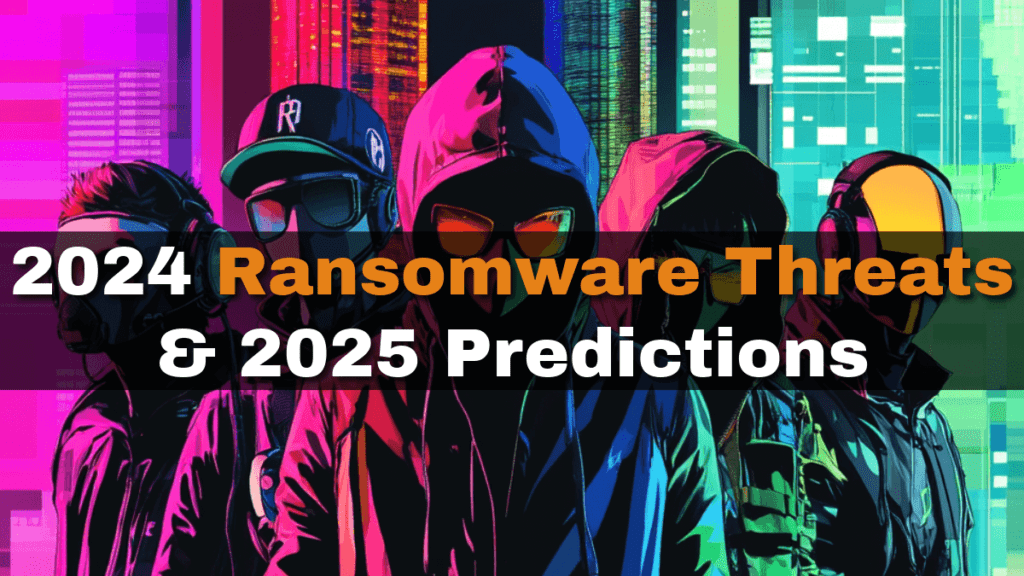
Key Ransomware Attack Trends of 2024: The New Face of Cyber Extortion
Ransomware in 2024 Redefined itself through several chilling trends:
Data Extortion Takes Center Stage:
Healthcare’s Darkest Year:
New Kings of the Underworld:
Vulnerabilities Exploited at Warp Speed:
Midsized and Small Businesses Under Fire:
Cloud as a Weapon:
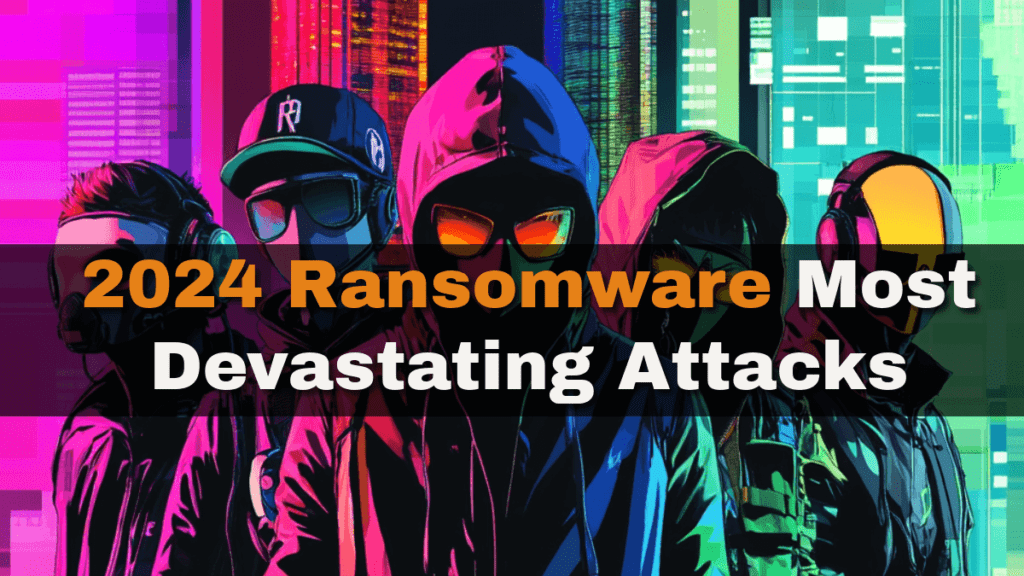
2024’s Ransomware Landscape Most Devastating Attacks: The Stakes Skyrocket
Change Healthcare Siege:
- ALPHV’s assault on Change Healthcare wasn’t a hit-and-run—it was a months-long siege. Over 100 million patients’ medical records were stolen, and services ground to a halt. UnitedHealth, its parent company, bled $872 million in Q1 alone. This wasn’t just a breach; it was a wake-up call for healthcare’s fragility.
Planned Parenthood Heist:
- RansomHub swiped 93GB of sensitive data from Planned Parenthood’s Montana branch, proving even mission-driven organizations aren’t spared.
- London Hospitals Paralyzed:
- The Stinkbug group (aka Qilin) hit Synnovis, a pathology provider, disrupting multiple London hospitals. Critical care hung in the balance, a stark illustration of ransomware’s real-world toll.
Record-Breaking Paydays:
- The shadowy Dark Angels group reportedly extracted $75 million from an unnamed Fortune 50 titan—the highest ransom ever recorded. ALPHV also cashed in, pulling $22 million from Change Healthcare. These jaw-dropping sums fueled the ransomware machine.
Additional Flashpoint:
- Let me add one more from memory: the City of Columbus breach in July 2024. The Rhysida gang stole 6.5TB of data—including police records and citizen IDs—then dumped it on the dark web after the city refused to pay. It was a chilling display of ransomware’s spiteful edge.
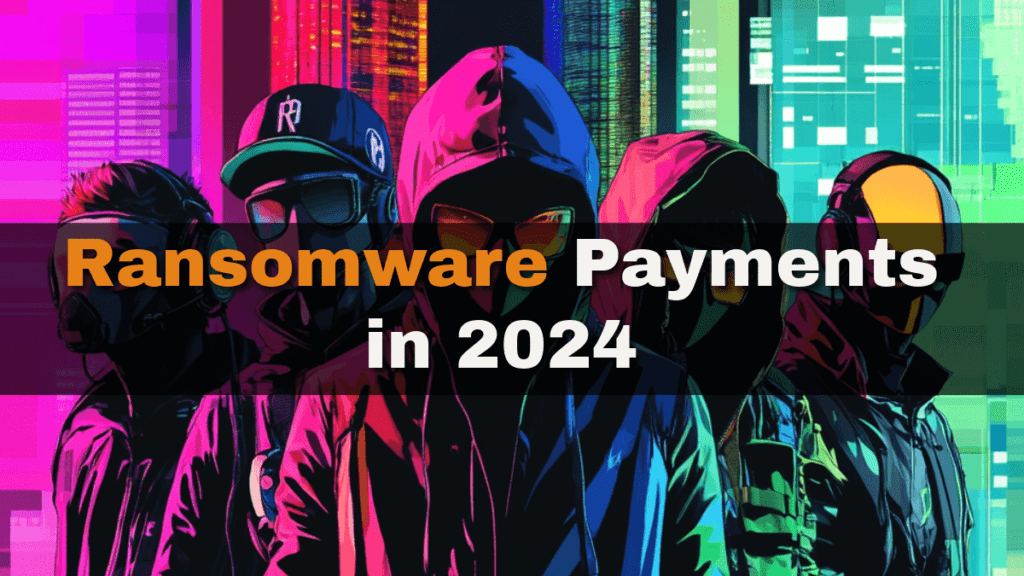
Ransomware Payments in 2024: A Year of Contrasts and Emerging Trends
Key Takeaways:
- Decline in Total Payments: Total ransomware payments fell by 35% from 2023, reflecting changes in victim behavior and attacker strategies, though the threat remains widespread.
- Rise in Individual Ransom Amounts: Despite fewer payments overall, the average ransom size increased, with a notable $75 million payment to the Dark Angels group by a Fortune 50 company, showing a focus on high-value targets.
- Law Enforcement’s Impact: Coordinated international efforts disrupted major groups like LockBit and ALPHV/BlackCat, significantly contributing to the drop in total ransom payments.
- Increased Victim Reluctance: Organizations grew less willing to pay ransoms, thanks to better cybersecurity, stronger incident response plans, and a reluctance to support criminal activities.
- Resilience of Ransomware Ecosystem: New ransomware groups emerged quickly after disruptions, and attackers shifted to data extortion tactics, keeping the ransomware threat alive.
- Rapid Exploitation of Vulnerabilities: Attackers capitalized on newly disclosed vulnerabilities within four days, highlighting the urgency of timely patching and proactive security measures.
Predictions for 2025: Adaptation and Escalation
Key Takeaways:
- AI-Driven Attacks: Threat actors are expected to use AI to automate phishing, vulnerability scanning, and attack optimization, boosting the efficiency and reach of their campaigns.
- Continued Targeting of Critical Infrastructure: Sectors like healthcare and energy will stay prime targets due to their critical roles and past tendencies to pay substantial ransoms.
- Shift in Cryptocurrency Use: Attackers may turn to privacy-focused cryptocurrencies like Monero to avoid detection and sanctions, making it harder for law enforcement to track funds.
- Intensified Law Enforcement Efforts: Global cooperation will ramp up to fight ransomware, but attackers are likely to counter with decentralized operations and new evasion tactics, prolonging the struggle.
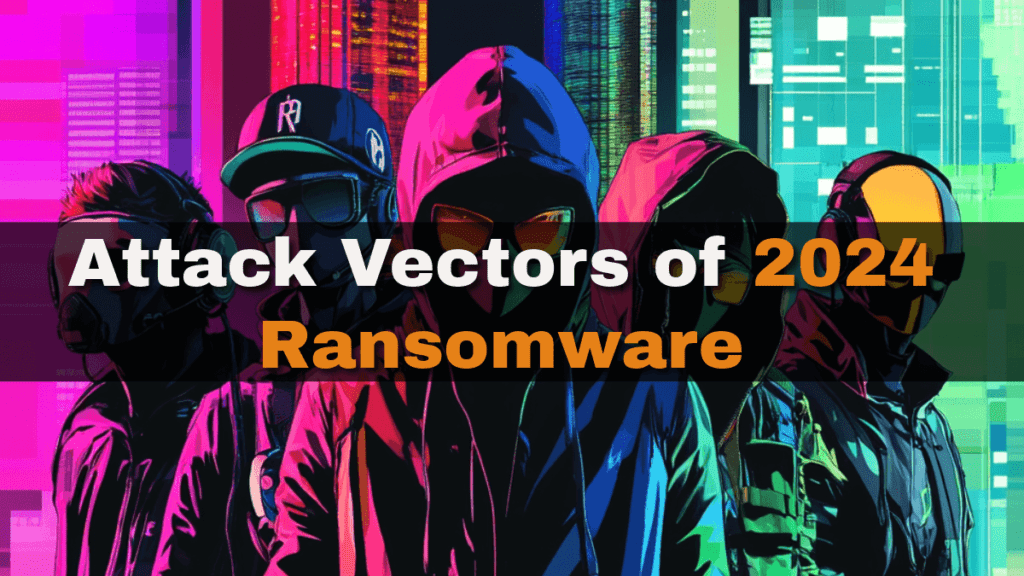
How They Got In: Attack Vectors of 2024 Ransomware
- Phishing’s Deadly Evolution: Phishing emails morphed into slick traps. One click could unleash hell, making human error the weakest link.
- Vulnerability Blitz: Known and zero-day flaws were exploited at breakneck speed—often before patches could roll out. The four-day window became a hacker’s playground.
- Remote Access Betrayal: Vulnerable VPNs and remote desktop protocols (RDP) were gateways to chaos. Dragos reported 20% of incidents tied to remote access exploits.
- Credential Chaos: Stolen passwords—snagged via infostealers or brute force—let attackers waltz past MFA. Once inside, they owned the network.
- Living Off the Land: Why bring tools when you can use what’s there? Native admin tools became weapons, letting attackers hide in plain sight.
Who Got Hit: The Odds Were Brutal
- Manufacturing Hammered: Over 50% of industrial victims came from manufacturing—complex supply chains and old tech made them sitting ducks.
- Healthcare’s Nightmare: With 198 million Americans impacted, healthcare faced a surge like no other. Outdated systems and high stakes were a perfect storm.
- Industrial Surge: Attacks on industrial firms jumped 87% year-over-year. Dragos tracked 80 ransomware actors hitting OT/ICS environments—a 60% spike from 2023.
- Top Dogs Dominate: The ten biggest groups drove 65% of attacks, but smaller players still packed a punch.
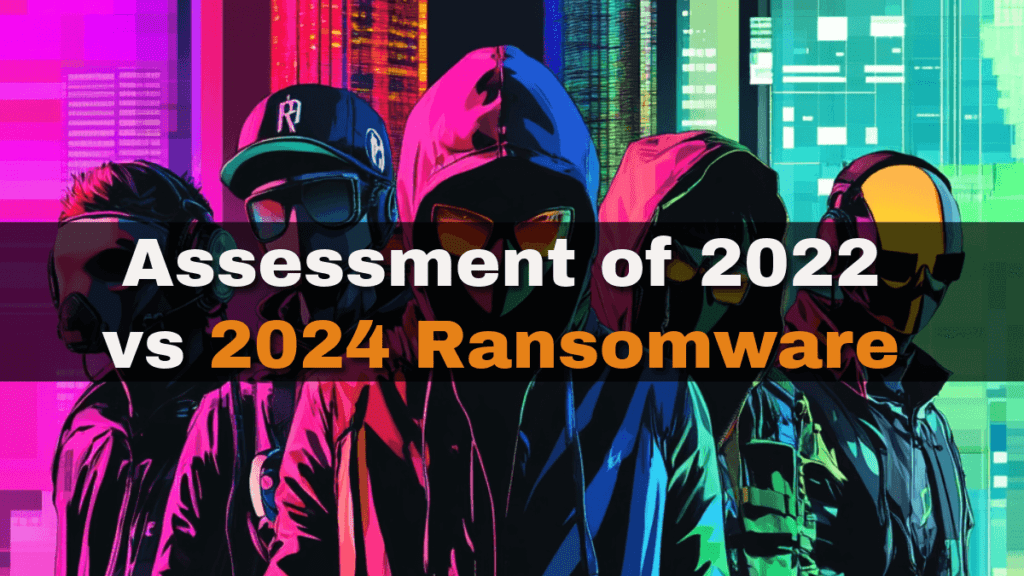
Comparison of Cyber Strategy Institute’s 2022 Analysis and the 2024 Current Analysis
Similarities in Analysis
- Ransomware as a Dominant Threat: CSI’s 2022 report labels ransomware as the “top danger” facing enterprises, predicting its continued prevalence into 2023 (Page 24). The 2024 analysis similarly positions ransomware as the most significant cyber threat, confirming its enduring impact on businesses.
- Tactical Evolution: CSI noted a strategic shift in ransomware due to geopolitical factors, such as the Russia-Ukraine war sanctions, which discouraged ransom payments and pushed attackers toward selling data on the dark web (Page 25). The 2024 analysis echoes this evolution, observing a move from encryption-based attacks to data exfiltration and extortion, driven by improved defenses like backups.
- Sector-Specific Targeting: Both analyses highlight healthcare as a prime target due to its critical operations and sensitive data. CSI’s report mentions healthcare alongside manufacturing and finance (Page 15), while the 2024 analysis emphasizes healthcare and industrial sectors, aligning with CSI’s broader sectoral concerns.
- Insider Threats: CSI emphasized a 44% rise in insider threat incidents, linking them to economic downturns and employee turnover (Page 10). The 2024 analysis acknowledges credential-based tactics, which insiders can facilitate, though it does not focus on this as heavily.
- Cloud and Remote Work Risks: CSI identified vulnerabilities in cloud storage and remote work environments, citing a 45% rate of cloud data breaches (Page 7). The 2024 analysis similarly notes the exploitation of cloud services for data exfiltration, reinforcing these shared concerns.
Differences in Analysis
- Emphasis on Data Extortion: The 2024 analysis strongly focuses on data extortion, with 80% of breaches involving exfiltration rather than encryption alone. CSI’s 2022 report anticipated a shift toward selling data on the dark web but did not predict the scale of this pivot (Page 25).
- Emergence of New Actors: The 2024 analysis details new ransomware gangs like RansomHub and Akira, emerging after disruptions to groups like LockBit. CSI’s 2022 analysis, limited to its timeframe, could not foresee these specific developments.
- Speed of Exploitation: The 2024 analysis highlights rapid exploitation of vulnerabilities within four days of a public exploit’s release. CSI’s report discusses vulnerability exploitation generally but does not address this accelerated timeline (Page 17).
- Healthcare Impact Specificity: While both target healthcare, the 2024 analysis quantifies its impact, noting over 198 million American patients affected. CSI’s 2022 report offers a broader prediction without such detailed statistics (Page 17).
- Geopolitical Context: CSI ties ransomware activity shifts explicitly to the Russia-Ukraine war sanctions (Page 25), whereas the 2024 analysis does not link threats to specific geopolitical events, suggesting a broader focus on tactical evolution.
Deltas in Predictions and Outcomes
- Ransomware Payment Demands: CSI predicted rising ransom demands due to economic pressures on cybercriminals, averaging $2.2 million in 2022 (Page 25). The 2024 analysis confirms this trend, citing a record $75 million payment to the Dark Angels group, indicating an even greater escalation.
- Strategic Shift: CSI accurately foresaw a shift in ransomware operator tactics due to sanctions, moving toward data sales (Page 25). However, it underestimated the extent of the pivot to data extortion over encryption, a hallmark of the 2024 landscape.
- Insider Threats: CSI’s focus on insider threats due to economic instability was partially validated, as 2024 notes credential-based attacks. Yet, the 2024 analysis lacks specific emphasis on insiders, suggesting this threat may not have grown as significantly as anticipated.
- Cloud and Remote Work: CSI’s concerns about cloud and remote work vulnerabilities (Page 7) were borne out, with 2024 highlighting cloud service exploitation. The delta lies in the specificity of exfiltration tactics, which CSI did not fully predict.
Analysis of Cyber Strategy Institutes (CSI) 2023 Cybersecurity Report on Ransomware Predictions
- Continued Dominance: CSI predicted ransomware payloads would remain the top threat (Page 24), which the 2024 analysis confirms, noting its persistent significance across industries.
- Sector Targeting: The targeting of healthcare and critical sectors, as predicted (Page 15), materialized, with 2024 emphasizing healthcare’s vulnerability and providing concrete impact data.
- Economic Influence: CSI’s insight that economic pressures would drive higher ransom demands (Page 25) proved correct, as 2024 reports multimillion-dollar payments, reflecting cybercriminals’ adaptation to financial strain.
Predictions That Did Not Fully Materialize
- Insider Threat Surge: CSI anticipated a pronounced rise in insider threats due to economic downturns (Page 26). While 2024 acknowledges credential-based tactics, it does not highlight insiders as a primary driver, suggesting this prediction was overstated or less documented.
- Specific Tactical Shift: Although CSI foresaw a shift from encryption to data sales (Page 25), it did not predict the overwhelming dominance of data extortion seen in 2024 (80% of breaches). This underestimation likely stems from the rapid evolution of attacker strategies post-2022, influenced by factors like improved organizational backups, which CSI could not fully anticipate.
Reasons for Discrepancies
- Rapid Threat Evolution: The shift to data extortion may have accelerated beyond CSI’s expectations due to technological advancements (e.g., better backup solutions) and legal pressures (e.g., sanctions), which evolved significantly after 2022.
- Data Limitations: CSI’s lack of focus on insider threats in 2024 could reflect insufficient data in the current analysis rather than a failure of the prediction. Alternatively, other attack vectors (e.g., external exploits) may have overshadowed insider contributions.
- Geopolitical Unpredictability: While CSI linked tactics to the Russia-Ukraine war, subsequent geopolitical or economic shifts not captured in 2022 may have driven unforeseen changes in ransomware strategies by 2024.
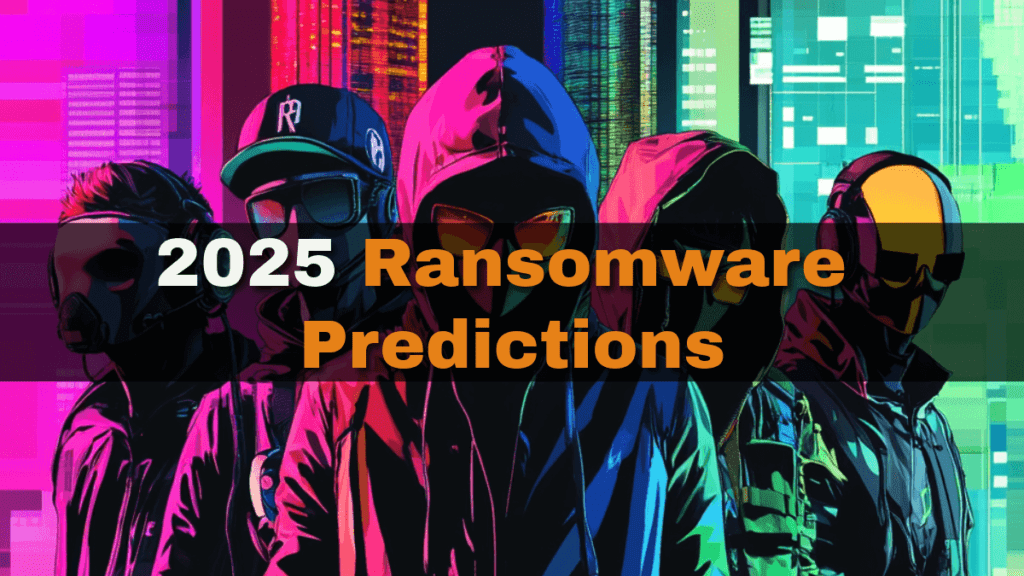
Forecast for 2025: The Storm Rages On
- Relentless Threat Levels: Ransomware and data extortion will stay sky-high, with exfiltration-only attacks dominating. Recovery isn’t just about systems anymore—it’s about privacy and reputation.
- New Players Rise: Expect more groups as affiliates scatter and regroup. RansomHub will hold strong, though its peak may flatten. Keep an eye on BlackLock—it could seize the lead by Q3 2025.
- Extortion Gets Nastier: Double and triple extortion—encryption, theft, plus DDoS or customer harassment—will refine the pressure cooker.
- Sector Bullseyes: Retail, construction, healthcare, and tech will stay in the crosshairs, their willingness to pay a fatal lure. Healthcare’s woes won’t ease.
- North America’s Burden: The region’s wealth and digital reliance will keep it a top target.
- Geopolitical Twist: Economic, political, and ideological motives may fuse, especially against critical infrastructure. Think nation-states using ransomware as a hybrid weapon.
- Cloud Chaos: Attacks on Microsoft 365 and other cloud services will spike, exploiting misconfigurations and weak controls.
Expert Insights: What I See Coming
- AI as a Double-Edged Sword: Hackers will wield AI to supercharge phishing and target selection. Defenders must counter with AI-driven detection—think behavioral analytics spotting threats in real time.
- Supply Chain Dominoes: Small vendors will be breached to hit bigger fish. One weak link could topple dozens.
- RaaS Fragmentation: Ransomware-as-a-Service will spawn more small-time operators, making the landscape messier and deadlier.
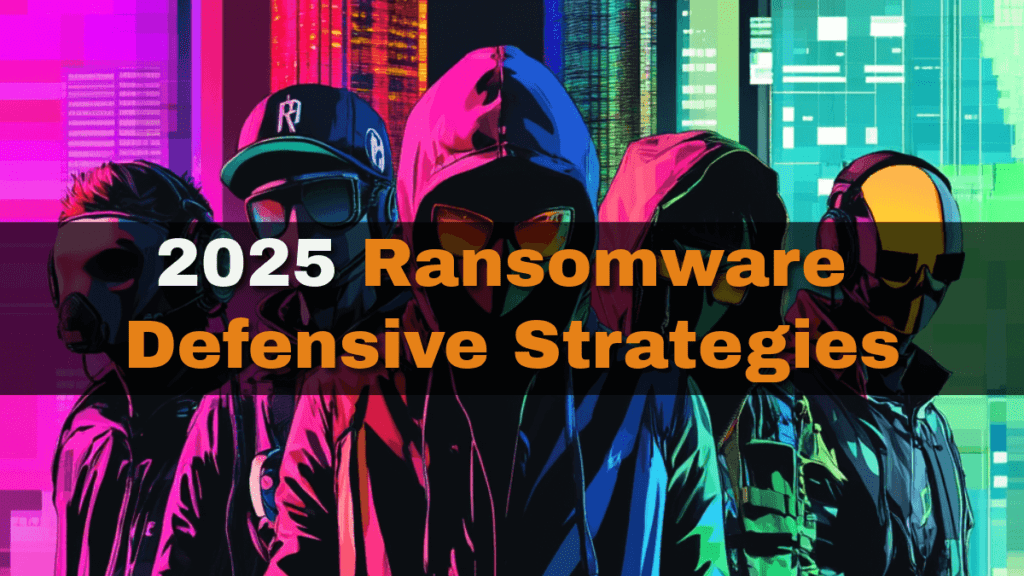
Fighting Back: Your Defense Playbook
You can’t stop ransomware with hope—you need action. Here’s how to protect yourself:
- Backups and Segmentation: Offline backups are non-negotiable. Segment your network to box in breaches.
- Train Your People: Phishing’s still king—turn employees into your first line of defense with regular drills.
- Smart Detection: Ditch old-school antivirus. Use EDR and behavioral tools to catch threats early.
- Patch Like Your Life Depends On It: Automate updates to slam the door on exploits.
- Zero Trust Mindset: Trust no one—limit access to the bare minimum.
- Team Up: Share intel across industries. Lone wolves lose; united fronts win.
Warden’s Defenses:
Warden’s Endpoint Defense: Zero Trust, Out of the Box
Key features include:
- Default Deny: Warden only permits pre-approved processes to run, instantly blocking anything unknown or malicious. This eliminates the need to match threats against a database of known signatures.
- Kernel API Virtualization: By virtualizing kernel calls, Warden isolates malicious activity at the system level. This prevents attackers from exploiting low-level APIs to gain control or escalate privileges, even with previously unseen tactics.
- Proactive Containment: Threats are stopped in real-time, before they can escalate. This is particularly effective against zero-day attacks, which traditional tools struggle to detect until after the damage begins.
How It Differs:
Advantages:
- Stops Unknown Threats: By blocking anything not explicitly allowed, Warden neutralizes zero-day exploits without needing prior knowledge of the attack.
- No Update Dependency: Unlike signature-based systems, Warden doesn’t require constant updates to stay effective.
- Reduced Attack Surface: With only approved processes allowed, the opportunity for attackers to exploit vulnerabilities shrinks dramatically.
Warden’s CNAPP Defense: Runtime Protection for the Cloud
Key features include:
Zero Trust Security: Implements a Zero Trust model, ensuring that all workloads are continuously verified and monitored to prevent unauthorized access.
Continuous Monitoring and Real-Time Mitigation: Provides ongoing surveillance of cloud-native threats with the capability to respond and mitigate risks in real-time.
Application Security Posture Management (ASPM): Analyzes source code, simulates attacks on live applications, and assesses third-party dependencies to identify vulnerabilities.
Cloud Workload Protection Platform (CWPP): Models and hardens application behavior across cloud workloads, implements automatic Zero Trust policies, and supports multi-cloud environments to minimize attack surfaces.
Compliance Monitoring: Offers continuous compliance monitoring with customizable dashboards and automated alerts, ensuring adherence to security standards and regulations.
How It Differs:
- Real-Time Threat Prevention: Warden stops cloud-based attacks in their tracks, unlike solutions that merely alert teams after detection.
- Consistency Across Environments: By applying the same Default Deny and virtualization principles to both endpoints and cloud, Warden ensures unified protection.
- Scalability: Its proactive approach adapts seamlessly to the fluid nature of cloud-native architectures.
Comparison to Traditional Methods
Warden’s defenses diverge sharply from traditional security practices:
- Proactive vs. Reactive: Traditional tools wait for threats to match signatures or trigger behavioral alerts, responding after the fact. Warden prevents unauthorized actions upfront, stopping threats before they execute.
- Zero Trust vs. Perimeter-Based: Legacy systems often assume internal processes are safe once past the perimeter. Warden’s Zero Trust model verifies every action, regardless of origin.
- Runtime vs. Posture Focus: In the cloud, many CNAPPs prioritize static assessments over active defense. Warden’s runtime protection tackles threats during execution, offering a critical layer of security.
Advantages Over Others:
- Enhanced Security: By blocking unknown threats and containing them instantly, Warden outperforms reactive, signature-dependent systems.
- Reduced Noise: Proactive containment minimizes alerts, freeing security teams from constant triage.
- Simplified Operations: Warden works out of the box, reducing the need for manual tuning or extensive monitoring.





